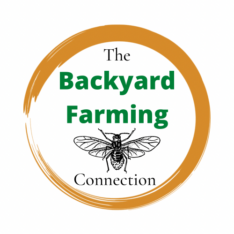In this article, we discuss 2 tried and true gardening methods: organic gardening, without the use of pesticides and chemical fertilizers and traditional gardening, or laying the garden out in a large rectangle with rows. Organic gardening methods are not new and in fact they have been used since people started to garden. For centuries, people have adjusted their growing methods by enriching the soil to improve the harvest. We also think of the large rectangular garden as a standard practice in gardening.
Contents
Organic Gardening
Organic gardening often uses a number of different methods, but ultimately is based on using the natural system, and specifically excludes synthetic fertilizers and pesticides. People choose to garden organically for their health, concern over the environment, to preserve seeds, and to maintain a natural approach to gardening.
In the commercial world (depending on your country) the word organic is regulated, and farmers must show compliance over a certain amount of time before becoming certified organic. For most of us growing in our backyard, organic gardening means finding natural solutions to fertilizing and pest control. While organic farming has been practiced for thousands of years, the modern organic farming movement really took root in the 1920’s with Rudolf Steiner. This movement continues to grow, and many home gardeners are taking advantage of the many practices that fall under organic gardening.
5 Benefits and Challenges to Organic Gardening
Benefits
- Produce is healthier for consumption without added chemicals
- Less chemical run off that impacts local wildlife
- Improved soil health over time
- Less expensive
- Disease resistant plants
Challenges
- It can be more labor intensive
- Constant work building up soil health
- Potential pest problems
- More complicated gardening practices (less focus on monoculture)
- More weeding

Traditional Gardening Method
Traditional gardening is difficult to define, mostly because there have been small and large differences in how people garden around the world and throughout time. It is simply impossible to comprehensively define a common, time-tested method. For the sake of simplicity, I will discuss traditional gardening as planting in a large garden space such as a rectangle in set rows. In modern gardening, traditional gardening has also come to mean gardening with the use of fertilizers, although many of these fertilizers are modern in nature.
Choosing to create a traditional gardening space is a wonderful option for people with a large area. Using large rows covered with mulch between your plants gives you room to walk, weed and even move a wheelbarrow between the plants. This also lends itself to the use of machines and for many, the well-defined rows have a simple beauty that takes us back to days on the farm. For people using row covers, a traditional garden row provides a natural set up.
Some people argue that by walking between the rows you decrease crops by compressing and damaging roots, and this method is not good choice for those with limited space. Traditional gardening often uses the soil already present, unlike raised bed gardening where soil is built up into beds. This does not mean that you can’t create a large gardening space that has added compost or has been amended. Traditional gardening is a wonderful place to start, especially for those with lots of space, good soil and adequate drainage.
Benefits and Challenges of Traditional Gardening
Benefits
- Easy to layout your crops neatly in rows and many tools are designed for working on rows
- Can use methods to reduce weeds such as covering the paths between rows
- You get the classic garden look
- Can set up irrigation with either drip irrigation or use a sprinkler
- Easy to fence in a rectangle
Challenges
- Walking between rows can cause compression of the soil
- May need to think creatively about spacing your crops
- You will need a large, sunny rectangular spot in your yard
- It’s easy to take on more than you can manage
- Better suited to large-scale gardening
If you’re looking for more ideas on vegetable gardening, visit the Backyard Farming Connection Pinterest page.






Great information! We are currently working on what you'd call a traditional garden using organic gardening methods. We do have some beds sectioned off for our plants, but the soil is all from our property. This will only be our second year to garden at our place, so we are definitely still learning.
We also do a combination. We've always had a tradtional garden but we are very slowly adding raised beds. The beds are still filled with our soil and as we add compost to them over time they will fill up.
I have friend from Kenya who says that they dig out their garden (or farm) area because they have very clay soil and they use that soil to build their homes. Then they fill the hole with wood, leaves, manure – whatever organic matter they can find – and then plant when that composts down a bit. They also plant in long rows. I think it's interesting how other cultures garden, esp. those where almost everyone grows their own food.
I'm excited for the rest of the series.
I am looking forward to learning about all of the gardening methods. I have had success with raised beds in the past and will probably try it again this year because I have limited space now.
All I can think right now is HELP?! I have fire ants and voles! And I don't want to use poison, but my market garden is suffering, and this is my livelihood!
I'm looking forward to following along.